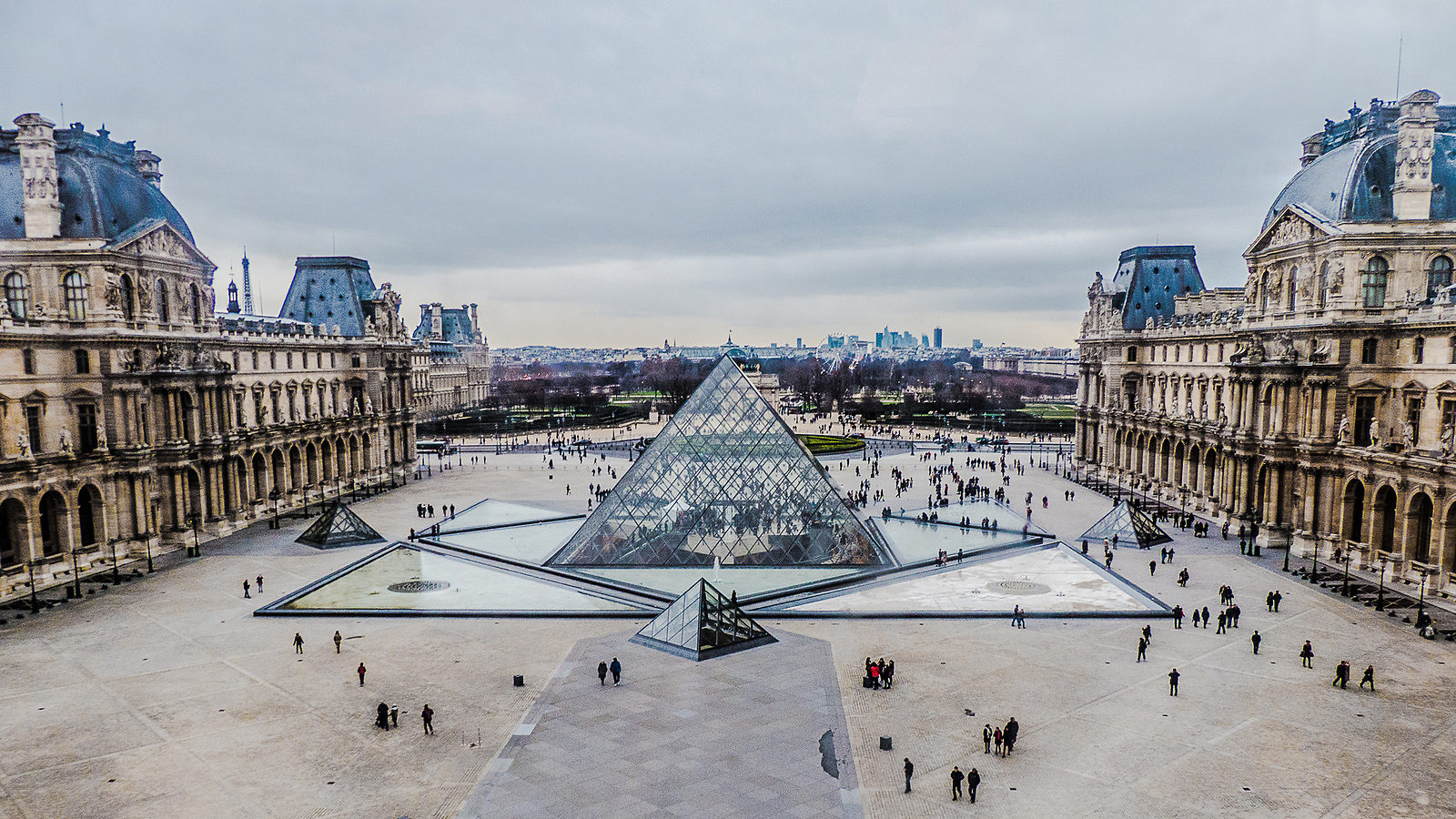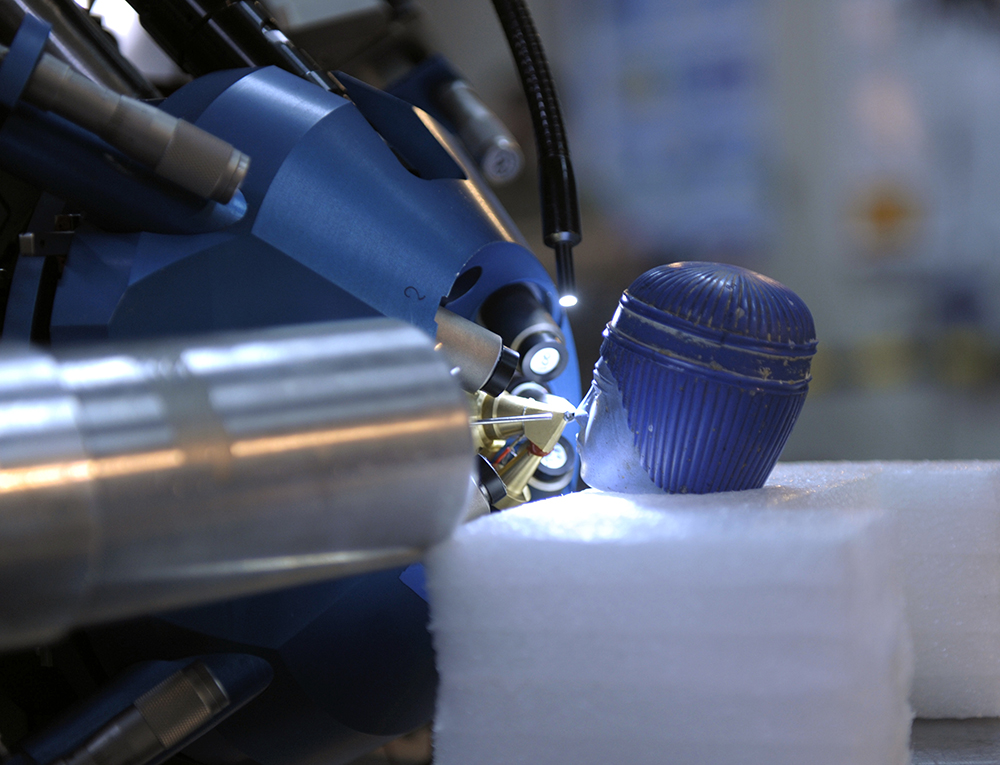In a basement 15 meters below the towering glass pyramid of the Louvre Museum in Paris sits a piece of work the curators have no plans to display: the museum’s particle accelerator.
This isn’t a Dan Brown novel. The Accélérateur Grand Louvre d’analyse élémentaire is real and has been a part of the museum since 1988.
Researchers use AGLAE’s beams of protons and alpha particles to find out what artifacts are made of and to verify their authenticity. The amounts and combinations of elements an object contains can serve as a fingerprint hinting at where minerals were mined and when an item was made.
Scientists have used AGLAE to check whether a saber scabbard gifted to Napoleon Bonaparte by the French government was actually cast in solid gold (it was) and to identify the minerals in the hauntingly lifelike eyes of a 4500-year-old Egyptian sculpture known as The Seated Scribe (black rock crystal and white magnesium carbonate veined with thin red lines of iron oxide).
“What makes the AGLAE facility unique is that our activities are 100 percent dedicated to cultural heritage,” says Claire Pacheco, who leads the team that operates the machine. It is the only particle accelerator that has been used solely for this field of research.
Pacheco began working with ion-beam analysis at AGLAE while pursuing a doctorate degree in ancient materials at France’s University of Bordeaux. She took over as its lead scientist in 2011 and now operates the particle accelerator with a team of three engineers.
Jean-Claude Dran, a scientist who worked with AGLAE during its early days and served for several years as a scientific advisor, says the study methods pioneered for AGLAE are uniquely suited to art and archaeological artifacts. “These techniques are very powerful, very accurate and very sensitive to trace elements.”
Crucially, they are also non-destructive in most cases, Pacheco says.
“Of course, AGLAE is non-invasive, which is priority No. 1 for cultural heritage” she says. The techniques used at AGLAE include particle-induced X-ray and gamma-ray emission spectrometries, which can identify the slightest traces of elements ranging from lithium to uranium.
Before AGLAE, research facilities typically required samples to be placed in a potentially damaging vacuum for similar materials analysis. Researchers hoping to study pieces too large for a vacuum chamber were out of luck. AGLAE, because its beams work outside the vacuum, allows researchers to study objects of any size and shape.
The physicists and engineers who conduct AGLAE experiments typically work hand-in-hand with curators and art historians.
While AGLAE frequently studies items from the local collection, it has a larger mission to study art and relics from museums all around France. It is also available to outside researchers, who have used it on pieces from museums such as the J. Paul Getty Museum in Los Angeles and the Metropolitan Museum of Art in New York.
AGLAE has been used to study glasses, metals and ceramics. In one case, Pacheco’s team wanted to know the origins of pieces of lusterware, a type of ceramic that takes on a metallic shine when kiln-fired. The technique emerged in ninth-century Mesopotamia and was spread all around the Mediterranean during the Muslim conquests. It had mostly faded by the 17th century, but some potters in Spain still carry on the tradition.
Pacheco’s team used AGLAE to pinpoint the elements in the lusterware, and then they mixed up batches of raw materials from different locations. “What we have tried to do is make a kind of ‘identity card’ for every production center at every period in time,” Pacheco says.
Another, recently published study details how AGLAE was also used to analyze the chemical signature of traces of decorative paint on ivory tusks. Pacheco’s team determined that the tusks were likely painted during the seventh century B.C.
A limitation of the AGLAE particle analysis techniques is that they are not very effective for studying paintings because of a slight risk of damage. But Pacheco says that an upgrade now in progress aims to produce a lower-power beam that, coupled with more sensitive detectors, could solve this problem.
Dubbed NEW AGLAE, the upgraded setup could boost automation to allow the accelerator to operate around the clock—it now operates only during the day.
While public tours are not permitted of AGLAE, Pacheco says there are frequent visits by researchers working in cultural heritage.
“It’s so marvelous,” she says. “We are very, very lucky to work in this environment, to study these objects.”








